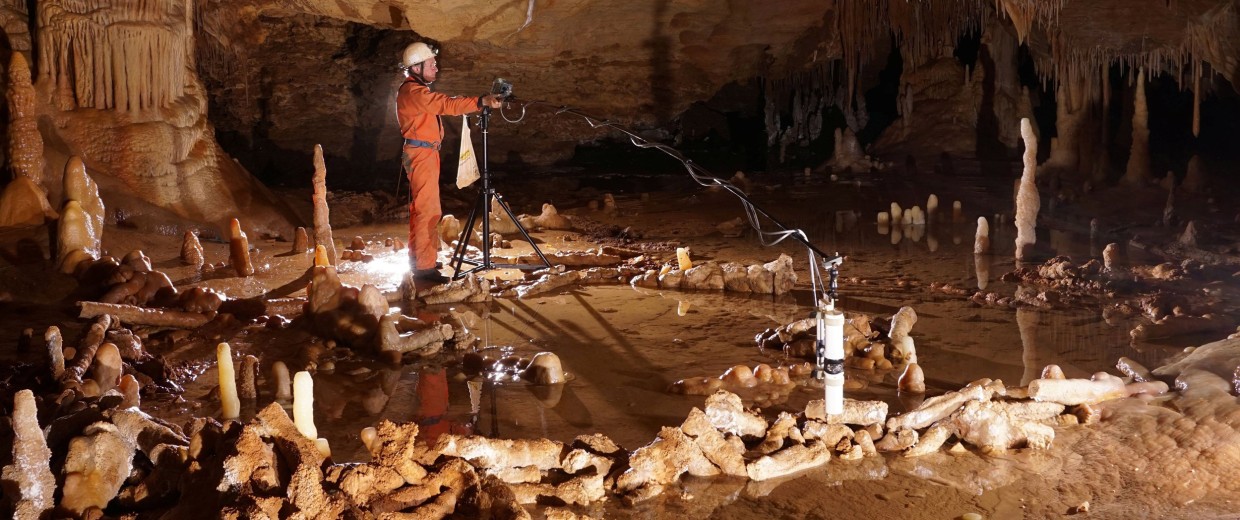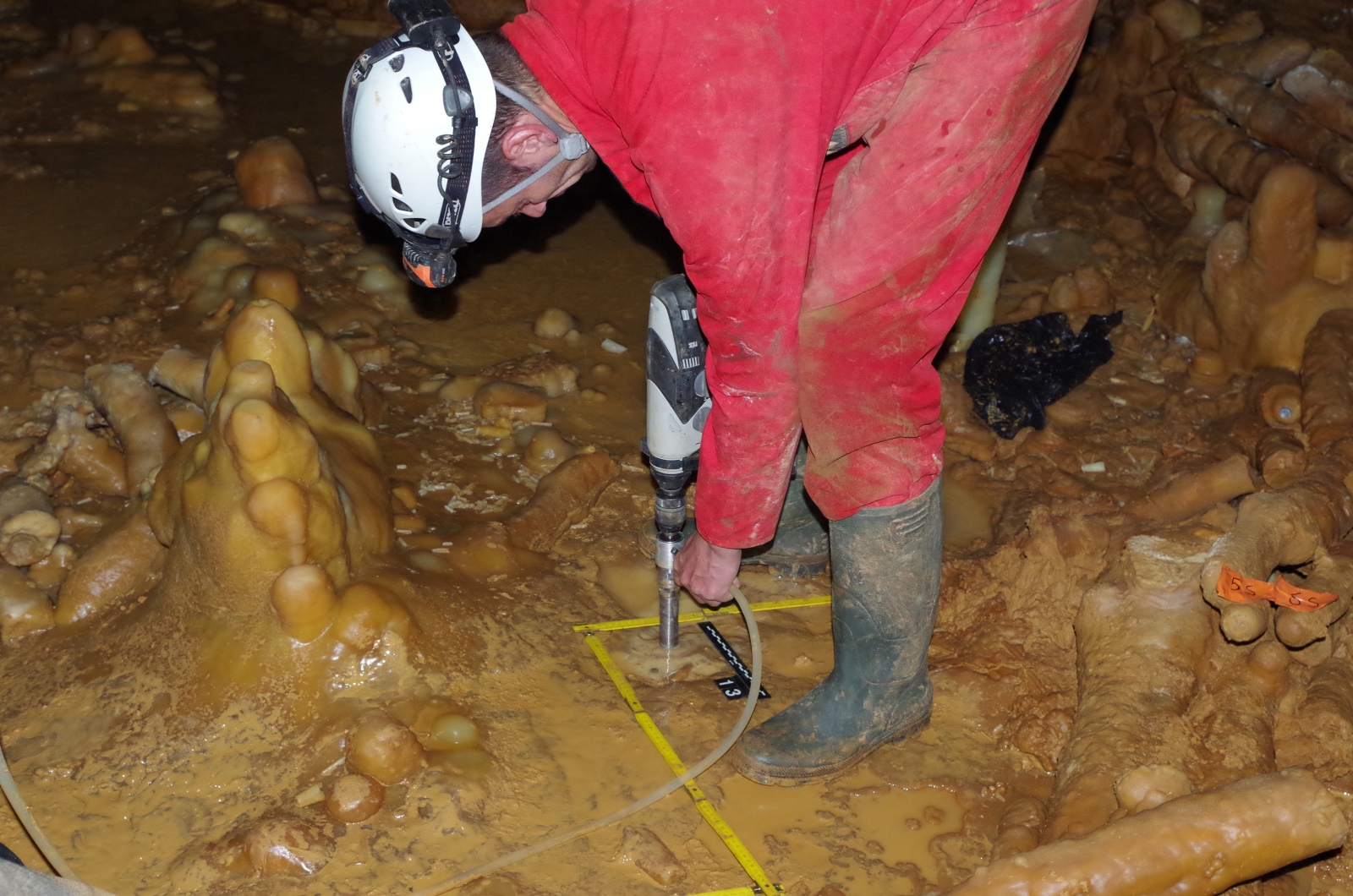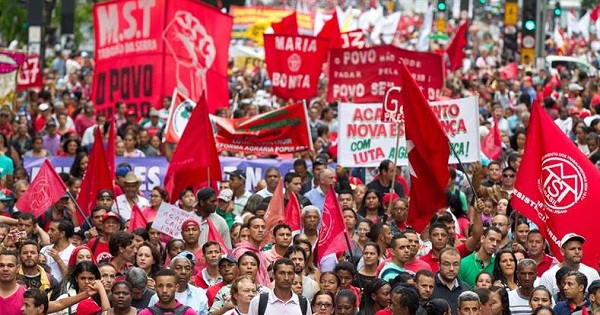Judi Lynn
Judi Lynn's JournalNeanderthals built mysterious cave structures 175,000 years ago
Neanderthals built mysterious cave structures 175,000 years ago
Ian Sample Science editor
@iansample
Wednesday 25 May 2016 13.01 EDT
Mysterious structures found deep inside a French cave are the work of Neanderthal builders who lived in the region more than 100,000 years before modern humans set foot in Europe.
The extraordinary constructions are made from nearly 400 stalagmites that have been yanked from the ground and stacked on top of one another to produce rudimentary walls on the damp cave floor.
The most prominent formations are two ringed walls, built four layers deep in places, which appear to have been propped up with stalagmites wedged in place as vertical stays. The largest of the walls is nearly seven metres across and, where intact, stands up to 40cm high.
“This is completely different to anything we have seen before. I find it very mysterious,” said Marie Soressi, an archaeologist at Leiden University, who was not involved in the research. Unique in the history of Neanderthal achievements, the structures rank among the earliest human building projects ever discovered.
More:
https://www.theguardian.com/science/2016/may/25/neanderthals-built-mysterious-cave-structures-175000-years-ago
[center]
 [/center]
[/center]
Scientists: Underground stone rings made by Neanderthals
By FRANK JORDANS
Posted: May. 25, 2016 8:00 am Updated: May. 25, 2016 1:03 pm
BERLIN (AP) — Two mysterious stone rings found deep inside a French cave were probably built by Neanderthals about 176,500 years ago, proving that the ancient cousins of humans were capable of more complex behavior than previously thought, scientists say.
The structures were made from hundreds of pillar-shaped mineral deposits, called stalagmites, which were chopped to a similar length and laid out in two oval patterns up to 40 centimeters (16 inches) inches high. They were discovered by chance in 1990, after remaining untouched for tens of thousands of years because a rockslide had closed the mouth of the cave at Bruniquel in southwest France.
While previous research had suggested the structures pre-dated the arrival of modern humans in Europe around 45,000 years ago, the notion that Neanderthals could have made them didn't fit long-held assumptions that these early humans were incapable of the kind of complex behavior necessary to work underground.
Using sophisticated dating techniques, a team led by archaeologist Jacques Jaubert of the University of Bordeaux, France, found that the stalagmites must have been broken off the ground around 176,500 years ago "making these edifices among the oldest known well-dated constructions made by humans."
"Their presence at 336 meters (368 yards) from the entrance of the cave indicates that humans from this period had already mastered the underground environment, which can be considered a major step in human modernity," the researchers concluded in a study published online Wednesday by the journal Nature.
More:
http://www.njherald.com/article/20160525/AP/305259687#
In Peru's Inca capital, indigenous leaders struggle for recognition of their heritage
In Peru's Inca capital, indigenous leaders struggle for recognition of their heritage
PRI's The World
May 24, 2016 · 4:45 PM EDT
By Maria Murriel
[font size=1]
A group of indigenous mayors, historians and activists gather for a candlelight vigil in Cuzco's main square to commemorate the 235th anniversary of freedom fighter and martyr Tupac Amaru, who was dismembered by Spanish colonists on the square.
Credit:
Maria Murriel
[/font]
Abigaíl Cárdenas Izquierdo thinks Cuzco is one of Peru's most revolutionary cities.
"It's not for nothing," the 18-year-old says, "we have Inca blood. I think Cuzco is one of the strongest cities, with the most conviction. ... We know what it is to fight."
Th city of Cuzco, once capital of the Inca empire that spanned most of western South America, has seen many fights. And the state of Cuzco is considered by some locals to be the birthplace of freedom from colonial rule, thanks to a man whose death was commemorated on the city's main square last week.
Tupac Amaru II, considered the last of royal Inca blood, led a rebellion against the Spanish and was drawn and quartered on the square in 1781. Amaru, his wife and children were dismembered, their limbs scattered through the region.
The people holding a vigil on the 235th anniversary of Amaru's death consider themselves his ethnic and ideological descendants.
More:
http://www.pri.org/stories/2016-05-24/perus-inca-capital-indigenous-leaders-struggle-recognition-their-heritage
May the Inca people finally build back their own world, and live in freedom.
Peru: Authorities Launch Money Laundering Probe Against Presidential Candidate
Peru: Authorities Launch Money Laundering Probe Against Presidential Candidate
Published: Wednesday, 25 May 2016 00:03
Authorities extended a preliminary investigation into alleged financial irregularities surrounding presidential candidate Keiko Fujimori, according to media reports based on leaked documents.
The probe was quietly launched in March, but a report last week in the Lima-based newspaper El Comercio brought new attention to the allegations, Voice of America said. Authorities are looking into her campaign contributions and land deals by her US citizen husband that total almost US$ 1 million. Some of the transactions that were flagged include two cocktail fundraisers and wire transfers from a company registered in the US, Deutsche Welle said.
Fujimori said at a news conference that citizens should not be deceived by the allegations, and added that she “found it interesting that these types of reports…are revealed two weeks from the presidential election.”
The allegations come just days after an ally of Fujimori resigned over a separate money laundering investigation. Media reported in mid-May that Congressman Joaquin Ramirez was being investigated by the US Drug Enforcement Agency. An informant allegedly taped a conversation in which Ramirez said that Fujimori gave him US$ 15 million to be laundered, Bloomberg said. According to the DEA, Fujimori is not under investigation in the case.
More:
https://www.occrp.org/en/daily/5264-peru-authorities-launch-money-laundering-probe-against-presidential-candidate
Quechua in the City
Quechua in the City
15 May, 2016 | Amy Booth

Culture
Photo: Amy Booth
The switch is instant. I’m in a dry river bed with my tour guide, David. One moment, he is explaining in clear, relaxed Spanish how fossilized dinosaur footprints are formed. The next, another tour guide passes and he switches into a swift, lilting chat punctuated by explosive little sounds, entirely unintelligible to me. He is speaking Quechua. David is one of several million Bolivians who are bilingual in Spanish and an indigenous language.
In the undulating, dusty national park of Torotoro, in northern Potosí, everyone from the shopkeepers to the toddlers speaks Quechua. Spanish feels like the language of tourists and outsiders, a lingua franca used to communicate but not to crack jokes or declare love.
We are four hours' drive on unpaved roads from Cochabamba, the nearest city. On the bus during the journey here, we passed small ramshackle huts made of adobe, the dried-earth building material traditional in the area. Small children spurred large herds of goats and sheep at the side of the road. Every so often, I would see a sign marking projects completed under the government's drive to eradicate extreme poverty.
Quechua – technically a family of languages given the difference between the varieties – is the most widely spoken indigenous language family in South America. Famously, it was the language of the Inca empire. Estimates vary, but the number of speakers is thought to be over 8 million – more than Danish, Finnish or Slovak.
More:
http://www.bolivianexpress.org/blog/posts/quechua-in-the-city
Brazil: Social movements denounce 'institutional coup'
Brazil: Social movements denounce 'institutional coup'
Saturday, May 21, 2016
Brazil's Federal Senate voted on May 12 to proceed with the impeachment process against Brazilian president Dilma Rousseff in a move that many see as an attempt by the right-wing opposition to carry out an “institutional coup”.
In response, the Popular Brazil Front, a broad coalition that includes the Unified Workers' Central (CUT) and the Landless Rural Workers' Movement (MST), said in a statement that the senate had “capitulated in the face of the oligarchy's coup against the Constitution, and become an accomplice in the flagrant breach of the democratic order”.
The Front insisted: “The popular vote has been usurped by parliamentarians seeking to seize political power. Acting without the backing of elections, they are part of the coalition of conservative forces that came together to establish an illegitimate government at the service of large local and international economic groups.
The statement described Dilma's “temporary removal” as “nothing more than a farce: with no crime of responsibility having been committed, it is simply a means towards inflicting heavy setbacks on … Brazilian workers.
“The intentions of the coup leaders have been openly declared: cut wages, end the policy of increasing the minimum wage, cut spending on social programs, eliminate civil rights, privatise state enterprises, reduce public investment, annul constitutionally-imposed expenditure on health and education, abdicate national sovereignty in the face of imperialist centres.
“To fulfil this anti-people and anti-national program, they will not hesitate to go beyond the institutional coup in progress, adopting measures of criminalisation and repression against democratic resistance, social movements and progressive parties.”
More:
https://www.greenleft.org.au/node/61803
Kasskara: Sunken Land of the Hopi Ancestors/Oraibi and Hopi History in North America
Life Arts 5/22/2016 at 07:07:37
Kasskara: Sunken Land of the Hopi Ancestors/Oraibi and Hopi History in North America
By Shawn Hamilton
* The first Americans DID NOT come over the Bering Strait south, but north from Kasskara, a sunken continent in the Pacific, via Easter Island, South America and Mexico.
* The current Hopi 'Aasa Clan' is related to a group formerly called the 'Astak', a group of Hopi ancestors the Spanish called the 'Aztec'.
*Hopi 'Kachinas' represent actual embodied beings that used technological equipment. The dolls bought by tourists today are for children and tourists. Kachinas are actual beings who came here to Earth in ancient times, helped the Hopi ancestors migrate, then eventually returned to their planet, according to the Hopi.
*Tiwanku was the first city built by Kachinas in the new South American continent as a home for the refugees of Kasskara. This continent has been called 'Lemuria' and in India 'Mu-Rutas'. The Hopis call it Kasskara, and they consider it their original home.
*It's time, perhaps, to rethink our cherished paradigms!
Oraibi is the oldest village on the North American continent and has been continuously inhabited since its foundation. Archaeologists have analyzed wood used in constructing Hopi houses and determined the village was created at about 1150 A.D., which White Bear said is off by thousands of years. Scientists didn't realize that the buildings they analyzed sat atop other villages lying below the current ruins. White Bear explained:

"The first village was founded 4.000 years ago. Oraibi was not the first village in this area. The very first one was called Shungopovi and was on the second mesa at the foot of the cliff, below the current village which bears the same name. At some point there was an argument between two brothers regarding a woman. The younger brother, Machito, decided to leave the village and to create his own village, which was called 'Oraibi' (Orayvi) , and it is still called this today. Machito, belonging to the Clan of the Bear and knowing all the traditions of his ancestors, brought to Oraibi something which today represents the most valuable of Hopi possessions--the four sacred boards, which his parents gave to him when he decided to create his village.
White Bear explained that several hundred years had elapsed before all the clans that were to come had arrived. Long before the creation of Oraibi, the clans that were to settle there had been selected, and even these selected clans could not come whenever they wished it. "Their Kachinas had to say to them, 'Now it is time for you to go there,' and then they came. It was the last time that the human beings could see their divinities. After that other Kachinas were designated to stay with the clans, but only in a spiritual form and not as a body," White Bear said. "Don't forget it."
He said each clan that wished to come to Oraibi had to settle initially within a few miles of the village. Many ruins in the surrounding area served as such provisional sites. After some time the clans could send their representatives to meet the chiefs in order to request permission to permanently settle. They were asked to explain the history of their migrations--where they had gone, what they had done, and whether they had followed the divine laws. Their complete history had to be reported to the leaders of the Clan of the Bear (this clan had authority due to its non-involvement in the destruction of Kasskara). In order to be accepted, however, it was not enough to have simply finished the migration; the clans were also required to specify how they envisioned participating in the ceremonies. 'There exists an annual cycle of ceremonies, which is complete only if all the ceremonies of each clan are represented,' White Bear said. "Consequently, a clan wanting to settle in Oraibi had to contribute to our cycle with its own ceremony."
More:
http://www.opednews.com/articles/Kasskara-Sunken-Land-of-t-by-Shawn-Hamilton-Groups-Cultures_Hopi_Indigenous-Cultures_Other-Cultures-160522-864.html
EXCLUSIVE: Brazil, the World’s Second-Largest Black Nation, Has Been Taken Over by an All White Male
EXCLUSIVE: Brazil, the World’s Second-Largest Black Nation, Has Been Taken Over by an All White Male Cabinet — Here’s What’s at Stake for Its Afro-Descendants
May 22, 2016 | Posted by David Love
Brazil has the fifth-largest population and the sixth-largest economy in the world. And if the nation’s new government of all white men has its way, Black power will be erased. Brazil’s majority African-descended population will be shut out of the process, losing the socioeconomic and political gains they have made in recent years.
Aside from Nigeria, no other country has as many Black people as Brazil. And yet, one would not know this solely by looking at the recently installed cabinet. Although this is a story unto itself, it is only the beginning of the story.
When Brazil’s Senate voted to impeach leftist President Dilma Rousseff of the Worker’s Party — who was imprisoned and tortured in 1970 under the nation’s former military regime — it used charges of corruption as a pretext, a smokescreen for what has been called a coup d’etat, observers say. Rousseff is accused of manipulating the government’s financial accounts and hiding a budget deficit for political gain, as the BBC reported.
Meanwhile, Vice President Michel Temer — who is of Lebanese descent and served as a U.S. diplomatic informant, according to Wikileaks — has replaced Rousseff and appointed a cabinet of 22 white men. Temer and six of his new ministers also face corruption charges in connection with a scandal at Petrobas, the state-owned oil company, according to The Guardian.
More:
http://atlantablackstar.com/2016/05/22/exclusive-brazil-the-worlds-second-largest-black-nation-has-been-taken-over-by-an-all-white-male-cabinet-heres-whats-at-stake-for-its-afro-descendants/
[center]




 [/center]
[/center]
Protests in Brazil's 2 biggest cities against acting leader
Source: Associated Press
Protests in Brazil's 2 biggest cities against acting leader
May 22, 5:28 PM EDT
By MAURICIO SAVARESE
Associated Press
RIO DE JANEIRO (AP) -- Thousands of demonstrators took to the streets of Brazil's two biggest cities Sunday to protest acting President Michel Temer, trying to keep up pressure on his interim administration only 10 days after he was sworn in.
A march in Sao Paulo headed toward Temer's residence, but police blocked roads near the house and the interim president left for the capital of Brasilia hours earlier. Organizers estimated 2,000 people participated in the demonstration.
In Rio de Janeiro, about 1,000 protesters staged a march calling for Temer to resign.
Some protesters want suspended President Dilma Rousseff back. Temer replaced her after the Senate voted to suspend the president and put her on trial for allegedly breaking fiscal laws. If 54 of the 81 senators agree that she should be impeached, she would be permanently removed from office and Temer could hold the presidency through 2018.
Read more: http://hosted.ap.org/dynamic/stories/L/LT_BRAZIL_PROTEST?SITE=AP&SECTION=HOME&TEMPLATE=DEFAULT&CTIME=2016-05-22-16-39-56
Inequality drives our journalism
Inequality drives our journalism
Note from the Center
Inequality is an underlying issue in much of what we cover, whether it is the contribution tax avoidance makes to global inequality uncovered by the Panama Papers or the growing erosion of the middle class in the United States, as exposed by much of our money-in-politics-led reporting.
Net access as a human right
One coverage area that has enabled us to link policy to inequality is access to broadband in the United States. Rather than look at it through a purely speed or net neutrality lens, Allan Holmes has written about the social and economic implications of poor U.S broadband quality and access.
This week Allan launched a series – combined with an entirely new data set on the problem from Ben Wieder – showing how high-quality broadband availability mysteriously stops on the border of poorer suburbs across America. It’s a story built on reporting, a human narrative and importantly on data. The national perspective on the problem cannot be ignored if you look at the amazing national map of broadband access developed by Chris Zubak-Skees. I suspect that map, based on a new compilation of data described here by Ben, will become a definitive resource.
The video on the story by Eleanor Bell Fox is a strong exposition of the problem in a different medium.
Why do we care? Because, as one of the sources in the story says, access to broadband is now a necessity, not a luxury. “Internet access…is the civil rights issue of our time.” Huffington Post, our co-pubishing partner on the story recognized the importance of the piece with "front page" treatment.
More:
https://www.publicintegrity.org/2016/05/18/19690/inequality-drives-our-journalism?utm_source=feedburner&utm_medium=feed&utm_campaign=Feed%3A+publici_rss+%28The+Center+for+Public+Integrity+Latest+Stories%29
A Secret Tunnel Found in Mexico May Finally Solve the Mysteries of Teotihuacán
A Secret Tunnel Found in Mexico May Finally Solve the Mysteries of Teotihuacán
The chance discovery beneath a nearly 2,000-year-old pyramid leads to the heart of a lost civilization

[font size=1]
The Temple of the Plumed Serpent is adorned with carved snake heads and slithering bodies. (Janet Jarman)
[/font]
By Matthew Shaer; Photographs by Janet Jarman
Smithsonian Magazine
June 2016
In the fall of 2003, a heavy rainstorm swept through the ruins of Teotihuacán, the pyramid-studded, pre-Aztec metropolis 30 miles northeast of present-day Mexico City. Dig sites sloshed over with water; a torrent of mud and debris coursed past rows of souvenir stands at the main entrance. The grounds of the city’s central courtyard buckled and broke. One morning, Sergio Gómez, an archaeologist with Mexico’s National Institute of Anthropology and History, arrived at work to find a nearly three-foot-wide sinkhole had opened at the foot of a large pyramid known as the Temple of the Plumed Serpent, in Teotihuacán’s southeast quadrant.
“My first thought was, ‘What exactly am I looking at?’” Gómez told me recently. “The second was, ‘How exactly are we going to fix this?’”
Gómez is wiry and small, with pronounced cheekbones, nicotine-stained fingers and a helmet of dense black hair that adds a couple of inches to his height. He has spent the past three decades—almost all of his professional career—working in and around Teotihuacán, which once, long ago, served as a cosmopolitan center of the Mesoamerican world. He is fond of saying that there are few living humans who know the place as intimately as he does.
And as far as he was concerned, there wasn’t anything beneath the Temple of the Plumed Serpent beyond dirt, fossils and rock. Gómez fetched a flashlight from his truck and aimed it into the sinkhole. Nothing: only darkness. So he tied a line of heavy rope around his waist and, with several colleagues holding onto the other end, he descended into the murk.
More:
http://www.smithsonianmag.com/history/discovery-secret-tunnel-mexico-solve-mysteries-teotihuacan-180959070/?no-ist
Profile Information
Member since: 2002Number of posts: 160,527
